
Milan Cathedral, or Metropolitan Cathedral-Basilica of the Nativity of Saint Mary, is the cathedral church of Milan, Lombardy, Italy. Dedicated to the Nativity of St. Mary, it is the seat of the Archbishop of Milan, currently Archbishop Mario Delpini.

Charles Borromeo was the Archbishop of Milan from 1564 to 1584 and a cardinal of the Catholic Church. He was a leading figure of the Counter-Reformation combat against the Protestant Reformation together with Ignatius of Loyola and Philip Neri. In that role he was responsible for significant reforms in the Catholic Church, including the founding of seminaries for the education of priests. He is honoured as a saint by the Catholic Church, with a feast day on 4 November.

Dionigi Tettamanzi was an Italian prelate of the Roman Catholic Church, who was named a cardinal in 1998. He was Archbishop of Genoa from 1995 to 2004 and Archbishop of Milan from 2004 to 2011.

The Archdiocese of Milan is a Latin Church ecclesiastical territory or archdiocese of the Catholic Church in Italy which covers the areas of Milan, Monza, Lecco and Varese. It has long maintained its own Latin liturgical rite usage, the Ambrosian rite, which is still used in the greater part of the diocesan territory. Among its past archbishops, the better known are Ambrose, Charles Borromeo, Pope Pius XI and Pope Paul VI.

The Archdiocese of Genoa is a Latin Church ecclesiastical territory or diocese of the Catholic Church in Italy. Erected in the 3rd century, it was elevated to an archdiocese on 20 March 1133. The archdiocese of Genoa was, in 1986, united with the Diocese of Bobbio-San Colombano, forming the Archdiocese of Genoa-Bobbio; however a split in 1989 renamed it the "Archdiocese of Genoa."

The aristocratic House of Borromeo were merchants in San Miniato around 1300 and became bankers in Milan after 1370. Vitaliano de' Vitaliani, who acquired the name of Borromeo from his uncle Giovanni, became the count of Arona in 1445. His descendants played important roles in the politics of the Duchy of Milan and as cardinals in the Catholic Reformation. In 1916, the head of the family was granted the title Prince of Angera by the King of Italy.

Ottone Visconti was Archbishop of Milan and Lord of Milan, the first of the Visconti line. Under his rule, the commune of Milan became a strong Ghibelline city and one of the Holy Roman Empire's seats in Italy.

The Diocese of Crema is a Latin diocese of the Catholic Church in Lombardy in northern Italy. It has existed since 1579. It is suffragan to the Archdiocese of Milan. The seat of the bishop is the cathedral of Santa Maria Assunta.
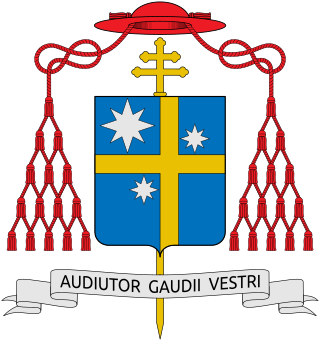
Giovanni Saldarini was an Italian Cardinal and Archbishop of Turin.

Karl Kajetan von Gaisruck was an Austrian Cardinal and the archbishop of Milan from 1816 to 1846. He also held the title of Graf or Count.

The Five Days of Milan was an insurrection and a major event in the Revolutionary Year of 1848 that started the First Italian War of Independence. On 18 March, a rebellion arose in the city of Milan which in five days of street fighting drove Marshal Radetzky and his Austrian soldiers from the city.

Renato Corti was an Italian cardinal and prelate of the Roman Catholic Church. He was Bishop of Novara from 1990 to 2011. Pope Francis raised Corti to the rank of cardinal on 19 November 2016.
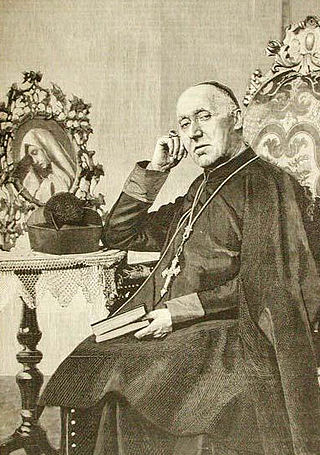
Luigi Nazari di Calabiana was an Italian churchman and politician: a senator of the Kingdom of Sardinia and Archbishop of Milan.
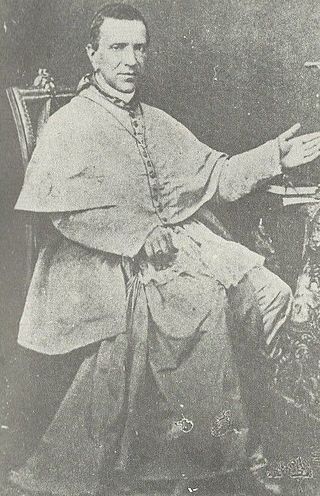
Paolo Angelo Ballerini was an Italian prelate who was named by Pope Pius IX as the Archbishop of Milan. He also served as the Latin Patriarch of Alexandria. His cause of beatification has been opened, thus titling him a Servant of God.
Carlo Caccia Dominioni (1802–1866) was an Italian prelate, who become auxiliary bishop of Milan.
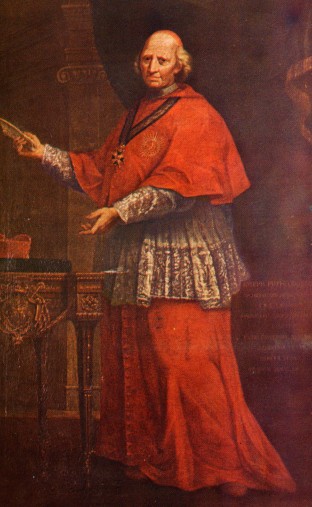
Giuseppe II Pozzobonelli was an Italian Cardinal and the Archbishop of Milan from 1743 to 1783.

Gabriele Sforza, was a member of the Augustinian Order who served as Archbishop of Milan from 1445 to his death in 1457.
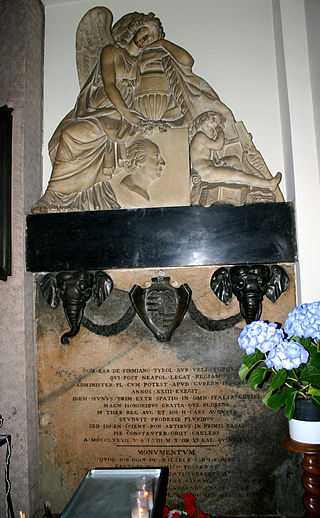
Karl Joseph von Firmian was an Austrian noble, who served as Plenipotentiary of Lombardy to the Austrio-Hungarian Empire. His proper name was Karl Gotthard von Firmian, and in Italy known as Carlo Giuseppe di Firmian. He was the nephew of Leopold Anton von Firmian.
The Oblates of Saints Ambrose and Charles is an Ambrosian association of lay people and secular clergy in the Roman Catholic Archdiocese of Milan. Its members use the suffix 'O.SS.C.A'. It was originally based in San Sepolcro, Milan, but in 1928 moved to its present base on via Settala.

















